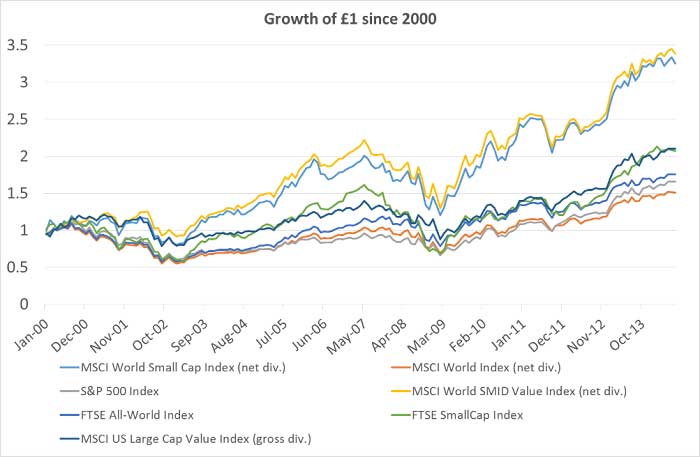
From a strategic point of view, active and passive managers differ in their view of financial markets and many argue that there is a place for both. Passive managers subscribe to the view that markets are efficient, aligning strategies to the “Efficient Market Hypothesis”[1]. However, active managers work on the principle that there is always value to be found within the market, and through thorough research and analysis above-market returns can be achieved. Interestingly, it could even be argued that without the research conducted by the active managers, market efficiency would be compromised.
It’s hard work to run an actively-managed fund that consistently beats the market. In an effort to achieve this, there are a number of strategies which can be employed: top down; bottom up; event-driven; value and growth investing; technical or fundamental analysis and the list goes on. Whilst many of these strategies may differ, a commonality throughout is that the active manager needs to draw upon a team of highly skilled individuals in order to conduct and implement these strategies. This will of course come at a cost, and as a result the fund must charge a higher premium, essentially raising the level of performance required to offer the investor a return above the benchmark[2]. Coupled with this, there are a number of academic articles of late suggesting that there are very few active managers who, on average, have the ability beat core market benchmarks, specifically when costs are taken into account[3].
As a result, interest within the passive investment arena has grown in recent years. As an illustration, according to the ICI, index-linked equity funds in the US had attracted US$1.7 trillion by the end of 2013, adding US$114 billion from the year prior. This is not surprising given the potential to offer healthy returns at a reduced cost, and whilst there is plenty of value to be found within the passive environment it is worth examining the investment process behind the strategy and the options available.
Indexing
Before choosing a passive investment strategy, it is important for the fund manager to define the “market” or benchmark which they are attempting to match, or beat. From a due diligence perspective this enables the fund manager to define the correct risk/return profile and align the fund with the chosen investment objectives. Once the benchmark has been determined the appropriate securities must be chosen, and, in line with this, a number of key criteria must be met. To begin with, the security needs to have a transparent pricing mechanism. Furthermore, there needs to be a high level of liquidity, not only such that the security can be bought and sold easily, but also to mitigate volatility on the price movements. In addition, the securities need to have an adequate amount of coverage, more specifically there must be ample capacity to invest across sectors, domiciles and varying credit ratings. Lastly, and perhaps one of the more important factors, are turnover and transaction costs. As the index is likely to require rebalancing in order to accurately reflect the benchmark which it tracks, trading and transaction costs must be kept to a minimum.
Once an investor is comfortable with the benchmark which they are trying to match, the investment vehicle must be determined. There are a number of vehicles from which to choose. However, the most common for the purposes of this article are exchange-traded funds (ETFs), or index funds. The choice of investment vehicle not only has important implications for performance and quality of benchmark duplication, but it also affects the cost of the investment. In addition, there is an element of operational and counterparty risk to consider, specifically with regards to vehicles such as ETFs.
The final step in the investment decision is the selection of the portfolio manager, as when one considers the apparent complications explained above, it becomes particularly important that the manager has taken these into account. Well-established and traditionally active fund management firms are introducing index and passive investments, and this serves to further complicate the investor’s decision with regards to the choice of index.
There are of course a few drawbacks to the passive investment route. Firstly, choosing an index-linked investment approach does not eliminate the asset allocation risk which every good portfolio should mitigate. Moreover, given the practical implications illustrated above, index-linked investments do not take individual investor circumstances into account, and are thus more likely to react to market-specific events.
“Smart beta”
Whilst research has shown that index investing has managed to at least match market returns, the professional investor is always in search of alpha and the potential to grow more than the market. This has led to the development of what many have termed “smart beta”, a strategy which has moved away from the traditional market capitalisation-based index strategies to alternative approaches in an effort to capture growth from targeted areas in the market.
However, the term “smart beta” has been incorrectly stereotyped to mean any index strategy which has done little more than move away from market cap-weighted strategies. A true smart beta strategy is one which offers a defined outcome which a traditional index fund cannot offer. In a nutshell, smart beta strategies seek to identify statistically significant market phenomena that provide a higher expected return. In many ways, it could be seen as an “active” element to a passive strategy. However, trading those phenomena in a fund without driving up costs is no small feat, and thus smart beta funds are therefore often differentiated on the trading costs.
The seminal research in this space comes from an academic article written by Eugene Fama and Kenneth French in 1992, titled “The Cross-Sections of Expected Stock Returns”[4]. In it, Fama and French determined that the market risk factor, defined in the capital asset pricing model (CAPM), does not adequately define stock market returns. Rather, they propose that size and value (high-book–to-value-price-ratio) are factors which better help to explain market outperformance. More specifically, small cap stocks outperform large cap stocks and that value stocks outperform growth stocks. This “three-factor model” is one clear way in which a well-defined smart beta strategy can be implemented.
Selection of index funds which look to track these elements within the market should, according to Fama and French, outperform the more traditional market cap-weighted index funds. It is worth pointing out that Fama in fact won the Nobel Prize for Economics in 2013 for his analysis of asset prices and how they change over time, research which has raised many questions with regards to investment portfolio construction. Recently, research conducted by Robert Novy-Marx[5] has shown there may be an additional factor in the form of profitability. Here the objective is to skew the investment toward stocks which offer a higher expected profitability, given that firms with higher profitability are expected to offer higher returns.

A simple illustration using well-recognised Morgan Stanley Capital International (MSCI) indices, compared to major developed market indices shows that this theory holds plenty of water.
Implications for individual investors
Given the correct knowledge and market timing there will always be active fund managers who will outperform the market. However the long-term investor will see potential growth eroded through higher investment fees, as well as the constant risk that the fund manager will make an incorrect decision. For the individual investor this has serious implications. Index investing offers a low-cost option of exposing their portfolio to a high probability of meeting at least average, or often above market returns.
As a result, there remains plenty of value for the individual investor within the passive investment space, specifically when one considers the smart beta environment which looks to take advantage of areas within the market expected to offer higher returns. As a result, for the investor looking for a low-cost alternative to an actively-managed fund, a well-constructed passive investment strategy which incorporates a smart beta component is one which every individual investor should consider. With this in mind, it is important to raise the debate with your investment advisor, as failure to do so means that your investment portfolio could be under-performing on both returns and fees.
[1] Fama, E (1970) Efficient Capital Markets: A Review of Theory and Empirical Work
[2] French, K (2008) Cost of Active Investing
[3] Carhart, M (1997) On Persistence in Mutual Fund Performance; Jones, R & Wermers, R (2011) Active Management in Mostly Efficient Markets; Malkiel, B (2005)
[4] Fama, E & French, K; “The Cross-Section of Expected Stock Returns,” Journal of Finance, 1992
[5] Novy-Marx, R; “The Other Side of Value: Good Growth and the Gross Profitability Premium” NBER Working Paper No. 15940, 2010
